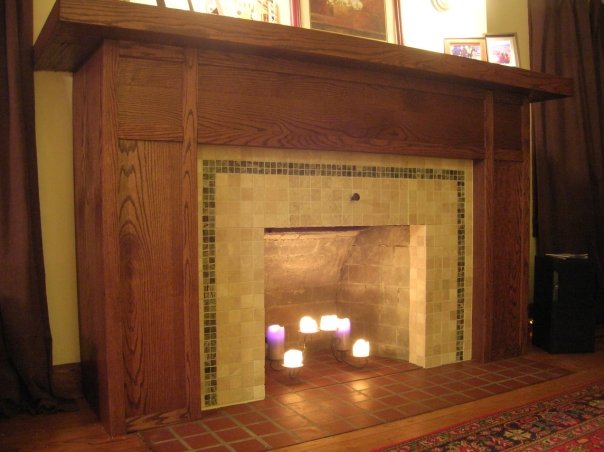
I love building fires in the winter. There’s something about that mesmerizing glow that I could watch for hours. Unfortunately, we haven’t really had a chance for any fires this year. In fact, the other day we had our first fire of the season, and it reminded me that I’m behind on some general maintenance. Every year you should run through this short checklist to make sure your fireplace is ready to go.

Cleaning / Chimney Sweep
Every year you should have a Certified Chimney Sweep out clean your chimney. This reduces the chance of a fire and carbon monoxide poisonings due to creosote buildup or an obstruction in the chimney. They can also check your chimney cap to ensure everything is in good condition. This is an important step even if you don’t build fires very often as animals or deterioration can make the chimney unsafe. Have you chimney cleaned during the off-season for cheaper prices- early spring to late summer.
What is Creosote Buildup?
Creosote is a byproduct of burning fuel in your fireplace. It clings to the inside of your chimney as a highly combustible, black or brown substance. It can be flaky, gummy or hardened. To reduce creosote buildup, there are a couple things to keep in mind:
- More efficient fires completely consume the fuel, burn hotter and result in less creosote.
- Seasoned wood has about half as much moisture as green wood resulting in an easier start, hotter fire and cleaner burn. Wood cut less than six months ago is considered green and the moisture will form creosote deposits.
- Condensation occurs more rapidly in colder chimneys (e.g. an exterior chimney), accelerating creosote buildup.
Creosote sweeping logs (CSL’s) can treat and reduce existing creosote but CSL’s do not replace a certified chimney sweep. A certified sweep will use brushes and sometimes chemical to removed buildup.
Inspect the Refractory Panels
Refractory panels reflect heat back into the room, protecting the firebox. If you observe any cracks large enough that you can insert a nickel, on-end, it’s time to have them replaced by a qualified professional. You should also replace any panels where the surface is worn away more than a ¼”.
Damper
The damper closes the flue and stops the flow of air. Check out your damper and make sure it isn’t obstructed and opens / closes properly.
What do you think? How do you keep your fireplace in shape?







Fireplaces/ improperly closing dampers can be a significant source of heat loss from a home. I heard a tip to check the damper. Hold a candle in the fireplace with the damper closed and see if the smoke rises. If so, the damper may not be fully closing. A piece of plywood can be cut, with styrofoam backing, edged with foam pipe insulation strips, and pushed up into the area to insulate. A sign must clearly indicate such a device is in use, so the next fire built doesn’t cause obvious problems.